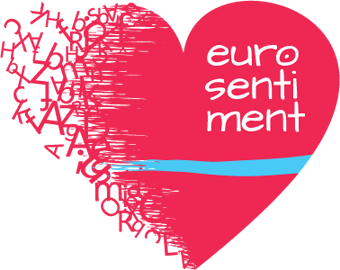

WordNet-Affect Taxonomy - SKOS version
V1.0 - 22 May 2013
This version:
http://gsi.upm.es/ontologies/wnaffect (RDF/XML)
Previous version:
WN-Affect 1.1 by FBK
Editors:
J. Fernando Sánchez-Rada
Authors:
Carlo Strapparava
Alessandro Valitutti
Contributors:
See acknowledgements
This work is licensed under a Creative Commons Attribution License. This copyright applies to the WordNet-Affect Taxonomy Specification and accompanying documentation in RDF. This ontology uses W3C's RDF technology, an open Web standard that can be freely used by anyone.
Abstract
WordNet-Affect is an extension of WordNet Domains. It includes a subset of synsets suitable to represent affective concepts correlated with affective word. This SKOS taxonomy mirrors the categories in WordNet-Affect and provides a semantic representation using the standard SKOS representation.
Table of Contents
1 Introduction
WordNet-Affect is useful to link synsets in the original Princeton Wordnet to affects. Only by using WordNet-Affect together with the existing information in WordNet, we get a really powerful tool to represent affects behind natural language. Moreover, developers can use that knowledge to extract affects from user-generated content, thus giving the first step to affect-aware systems.
However, WordNet-Affect is exclusively focused on providing extra information to WordNet's synsets. It would be interesting to be able to use the concepts it contains to other fields, and to be able to reason with these concepts, link them between applications and relate them to the concepts already existing in other ontologies and taxonomies. In other words: it is necessary to bring the knowledge behind WordNet-Affect to the current Semantic reality. One example of the application of WordNet-Affect beyond its initial purpose is representing Emotions annotated following the Onyx Ontology.
This SKOS representation is the first step to this conversion. With it, WordNet-Affect concepts can be used in any RDF graph, for any application from comment tagging to linking affect information to terms (e.g., using the Lemon Model). The current efforts to represent WordNet-aligned information in a semantic format using the Lemon Model for EUROSENTIMENT can be then used to translate the relation of synsets and affects.
2. SKOS
SKOS or Simple Knowledge Organization System, is a W3C's standard that serves as a bridging representation model between the chaotically heterogeneous traditional data models for taxonomies and the extremely formal languages used in the Semantic Web, like the Web Ontology Language (OWL). As such, it is perfect for tasks like translating WordNet-Affect.
For more information about SKOS and simple steps to get started with it, please visit the excellent documentation at the SKOS primer.
3. WordNet-Affect Taxonomy Overview
The WordNet-Affect taxonomy has more than 200 concepts linked by concept-superconcept relationships. Giving a full description of all these concepts is impractical. However, we present the following browsable tree in which the different relations between concepts are shown visually.
The full navigable tree: Full WordNet-Affect Taxonomy
In svg format: Full WordNet-Affect Taxonomy (SVG)
A Changelog
2013-05-22
- First version of the document
B Acknowledgements
Special thanks for support with the taxonomy translation to: Prof. Carlos A. Iglesias and members of the GSI Group of DIT department of Universidad Politécnica de Madrid.
This taxonomy has been translated for its use in the EUROSENTIMENT Project
V1.0 - 22 May 2013
- First version of the document
| This version: | http://gsi.upm.es/ontologies/wnaffect (RDF/XML) |
| Previous version: | WN-Affect 1.1 by FBK |
| Editors: | J. Fernando Sánchez-Rada |
| Authors: | Carlo Strapparava Alessandro Valitutti |
| Contributors: | See acknowledgements |
This work is licensed under a Creative Commons Attribution License. This copyright applies to the WordNet-Affect Taxonomy Specification and accompanying documentation in RDF. This ontology uses W3C's RDF technology, an open Web standard that can be freely used by anyone.
Abstract
WordNet-Affect is an extension of WordNet Domains. It includes a subset of synsets suitable to represent affective concepts correlated with affective word. This SKOS taxonomy mirrors the categories in WordNet-Affect and provides a semantic representation using the standard SKOS representation.
Table of Contents
1 Introduction
WordNet-Affect is useful to link synsets in the original Princeton Wordnet to affects. Only by using WordNet-Affect together with the existing information in WordNet, we get a really powerful tool to represent affects behind natural language. Moreover, developers can use that knowledge to extract affects from user-generated content, thus giving the first step to affect-aware systems.
However, WordNet-Affect is exclusively focused on providing extra information to WordNet's synsets. It would be interesting to be able to use the concepts it contains to other fields, and to be able to reason with these concepts, link them between applications and relate them to the concepts already existing in other ontologies and taxonomies. In other words: it is necessary to bring the knowledge behind WordNet-Affect to the current Semantic reality. One example of the application of WordNet-Affect beyond its initial purpose is representing Emotions annotated following the Onyx Ontology.
This SKOS representation is the first step to this conversion. With it, WordNet-Affect concepts can be used in any RDF graph, for any application from comment tagging to linking affect information to terms (e.g., using the Lemon Model). The current efforts to represent WordNet-aligned information in a semantic format using the Lemon Model for EUROSENTIMENT can be then used to translate the relation of synsets and affects.
2. SKOS
SKOS or Simple Knowledge Organization System, is a W3C's standard that serves as a bridging representation model between the chaotically heterogeneous traditional data models for taxonomies and the extremely formal languages used in the Semantic Web, like the Web Ontology Language (OWL). As such, it is perfect for tasks like translating WordNet-Affect.
For more information about SKOS and simple steps to get started with it, please visit the excellent documentation at the SKOS primer.
3. WordNet-Affect Taxonomy Overview
The WordNet-Affect taxonomy has more than 200 concepts linked by concept-superconcept relationships. Giving a full description of all these concepts is impractical. However, we present the following browsable tree in which the different relations between concepts are shown visually.
The full navigable tree: Full WordNet-Affect Taxonomy
In svg format: Full WordNet-Affect Taxonomy (SVG)
A Changelog
2013-05-22
B Acknowledgements
Special thanks for support with the taxonomy translation to: Prof. Carlos A. Iglesias and members of the GSI Group of DIT department of Universidad Politécnica de Madrid.
This taxonomy has been translated for its use in the EUROSENTIMENT Project
